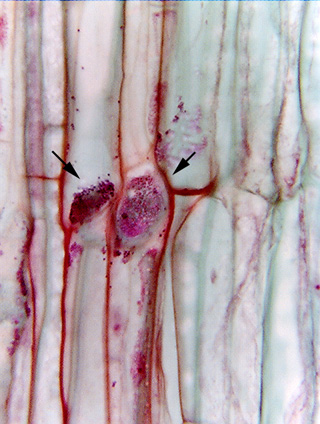 Fig.
8.2-3.
Longitudinal section of sieve tube member in milkweed. In this section, the two sieve
plates are oriented such that we see the right one in face view, the
left one at an angle, but not directly from the side as in Fig. 8.2-2. They
almost appear to be blockages in single long cells, but remember that sieve
plates are where two sieve tube members contact each other. Like perforation
plates, each sieve plate actually consists of the plate of one sieve tube member
contacting the sieve plate of another, with their sieve pores aligned.
Fig.
8.2-3.
Longitudinal section of sieve tube member in milkweed. In this section, the two sieve
plates are oriented such that we see the right one in face view, the
left one at an angle, but not directly from the side as in Fig. 8.2-2. They
almost appear to be blockages in single long cells, but remember that sieve
plates are where two sieve tube members contact each other. Like perforation
plates, each sieve plate actually consists of the plate of one sieve tube member
contacting the sieve plate of another, with their sieve pores aligned.